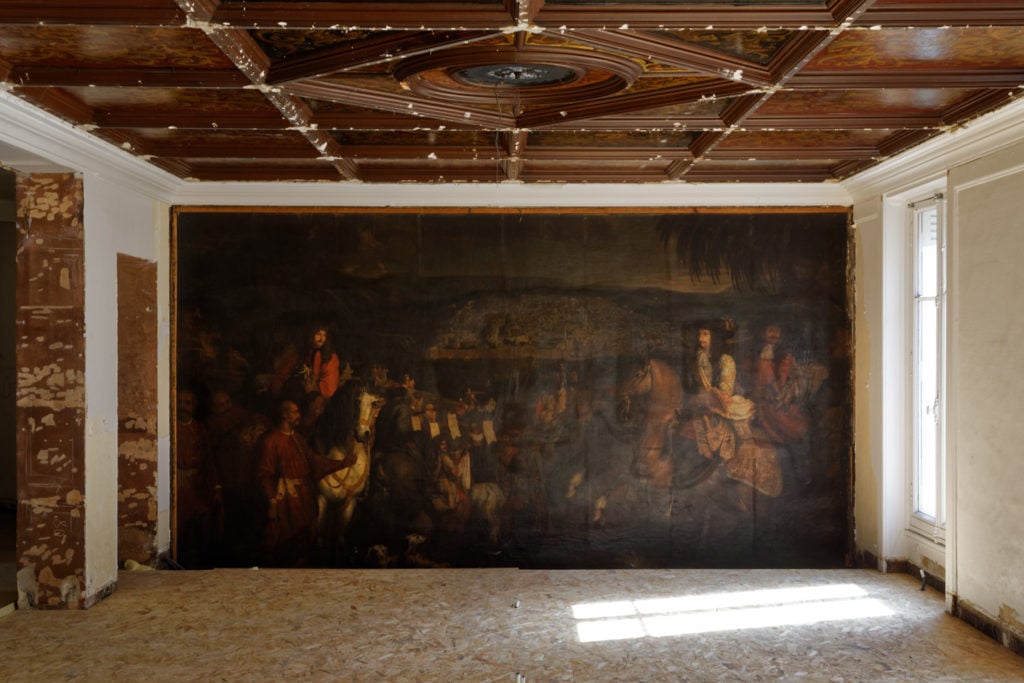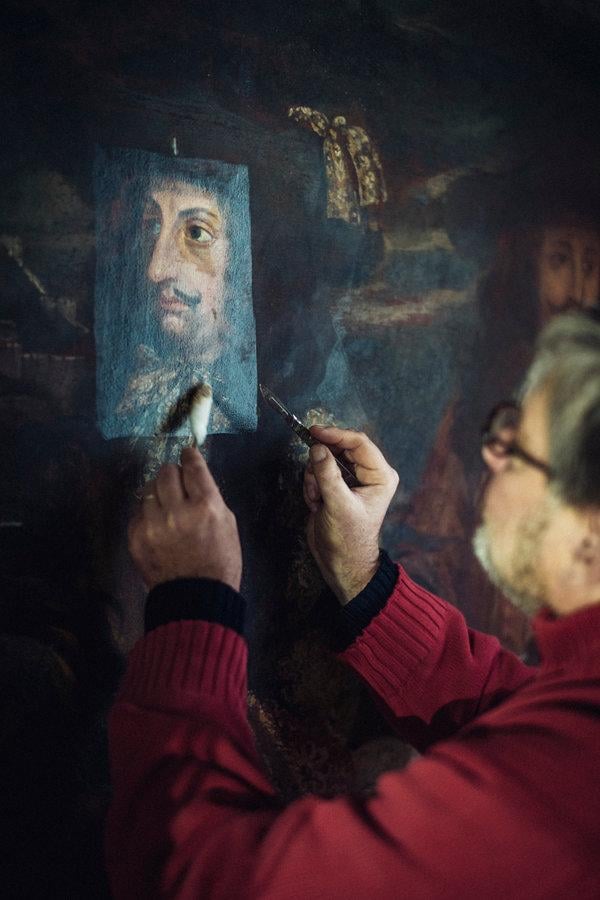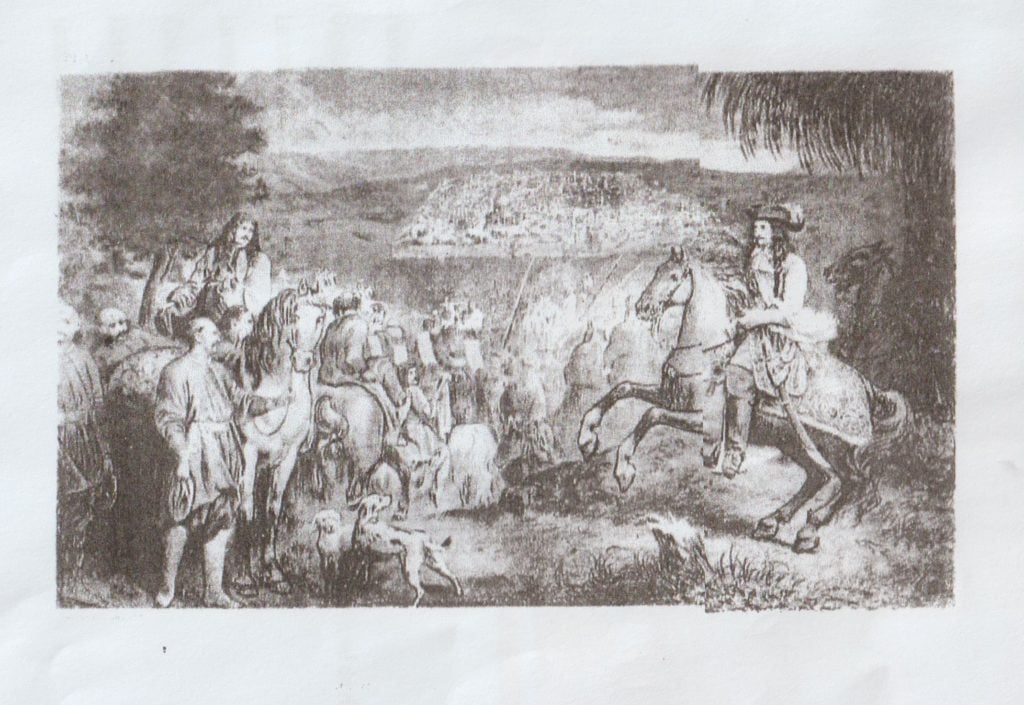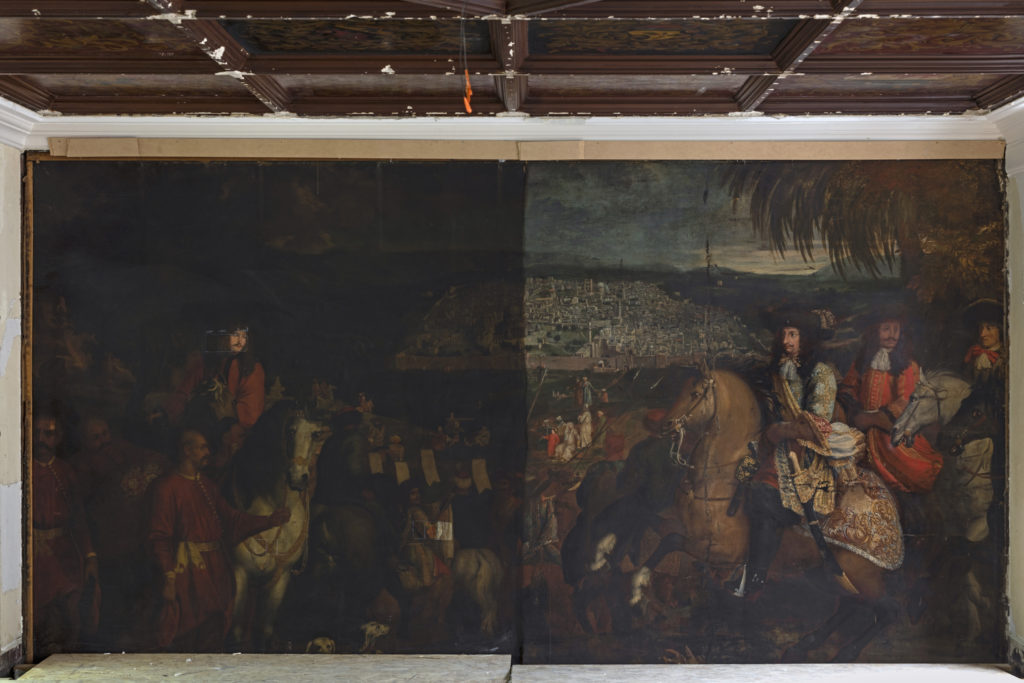Art World
Construction Workers Uncovered an ‘Exceptional’ 17th-Century Painting While Renovating a Designer Boutique in Paris
It’s a mystery how the remarkable work ended up hidden in the historic home of a French noble family.

It’s a mystery how the remarkable work ended up hidden in the historic home of a French noble family.

Naomi Rea

Construction workers remodeling a historic building in Paris were taken aback when they stumbled upon a long-hidden painting behind a wall. It turned out to be an extremely happy accident: Art historians traced the large-scale work to a painter in the court of Louis XIV. After careful restoration, it will become the centerpiece of a new Oscar de la Renta boutique opening in late spring.
A workman accidentally uncovered the secret painting behind a fiberboard wall last summer while his team was renovating a building in one of the city’s chicest neighborhoods. The 19th-century building on the Rue de Marignan was formerly home to a French noble family, and the 10-by-20-foot oil painting is believed to be more than three centuries old.
“It’s the holy grail,” Benoît Janson, the expert tasked with restoring the work, gushed to artnet News. “I’ve been restoring artworks for 40 years, and I’ve never seen anything like it.”
Workers making way for the forthcoming Oscar de la Renta store got their first clue that this would not be a routine job when they discovered an elaborate panel ceiling after hammering through an existing one left over from the building’s former life as an insurance brokerage. After removing the drab fiberboard walls, they discovered the mysterious artwork, which is glued to the wall and depicts a group of 17th-century aristocrats on horseback.

The restoration in progress. Image courtesy Benoît Janson / Nouvelle Tendance.
Janson explains that the work, although discovered in a very blackened state with few visible details, was in remarkably good condition. “It is so rare to find an artwork of this age in such a good state,” Janson said. “It is absolute bliss, this inexplicable holy grail, it is an exceptional discovery for a restorer.”
Slowly, as Janson and a team from his Paris workshop, Nouvelle Tendance, cleaned up the fragile canvas, they uncovered details about the work that enabled art historians to identify it as a scene of 17th-century Jerusalem. They cleaned the canvas, removing layers of yellowing varnish and overpainting done by previous restorers to reveal the work in its original splendor.

A photocopy of the rotogravure in the 1900 book Odyssey of an Ambassador: The Travels of the Marquis de Nointel, 1670-1680 by Albert Vandal. Image courtesy Benoît Janson / Nouvelle Tendance.
Then, the detective work continued. An expert in Old Master paintings, Stéphane Pinta, was able to identify the work as one created in 1674 by the painter Arnould de Vuez, who worked with Charles Le Brun, a court painter to Louis XIV. Pinta, who works for the research center Cabinet Turquin, found a copy of the work printed in an 18th-century book about the travels of a French marquis, Charles-Marie-François Olier, who was the Sun King’s ambassador to the Ottoman Court. The scene depicts this aristocrat arriving in Jerusalem with fanfare.
Janson says the 17th-century painting was likely mounted on the wall at some point in the 19th century, close to when the building was constructed. As to why it was covered up, “it’s a complicated question,” he says. “It’s hard to say when it was hidden, perhaps during the war, and it’s very difficult to say why. It’s a mystery.”

The work with half of its varnish removed. Image courtesy Benoît Janson / Nouvelle Tendance.
Janson has already worked on the painting for around a month and a half; he anticipates conservation will take around two more months. While the restorer could not speak to the value of the work, the highest price a work by de Vuez has achieved at auction is $22,765, according to the artnet Price Database. The painter’s Allégorie des Beaux Arts, a work that is considerably smaller than the one discovered in Paris, sold at Coutau-Bégarie auctions in 1999.
The owner of the new store, Oscar de la Renta’s chief executive Alex Bolen, struck a deal with the building’s landlords to allow the painting to remain in the boutique. Bolen told the New York Times that he agreed to oversee the restoration if the owners permitted the painting to remain in place at least until its current 10-year lease expires. The store is expected to open in late spring.